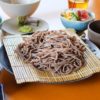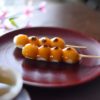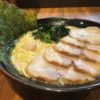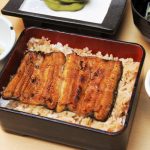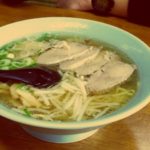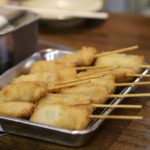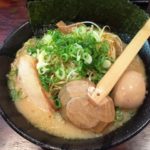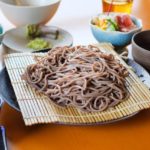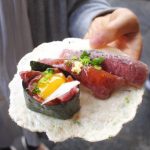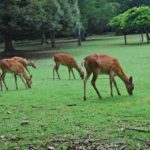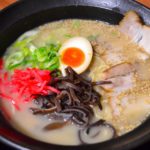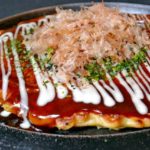11月 3, 2017
The Best 10 Places to Eat in Nara, Japan
- 22,655view
Nara is a city where very first so –called Capital was established in AC710. It was the first biggest national project and some of the ruins are still carefully preserved. As I mentioned before, it is rather authentic. You don’t see much English written on streets. So because of that you will see some gourmet foods you can only taste in Nara. Here are some recommendations of places to go so that you won’t have to wonder around wasting your time!
1. Zen
photo by wakamiyake / embedded from Instagram
Nabe is a meal with one large pot broth and cooked in front of you. The ingredient varies depending on where you are in Japan. Nara used to be called Asuka and its signature nabe is called Asuka-nabe. It started off with Chicken but now days it’s made of Pork stock. What makes it unique is its Milky soup. The mixture of Pork stock, soya sauce and milk is unexpectedly tasty.
The best place to enjoy Asuka-nabe is Zen. It is a traditional authentic Japanese restaurant with a beautiful Japanese garden. Zen offers Kaiseki menu all day. It comes on a large tray with lots of small dishes. Evening menu includes a little pot of Asuka-nabe. If you are with your friends and family, you can have Asuka-nabe with fish, crab or meat. All course menus include Sushi and Sashimi. You can have a taste of Japan with anything you order.
Name: Zen
Address: 2F Narara, 21-1 Konishi-cho, Nara
Opening hours: 11:00-15:00 / 17:00-22:30
Access: 1 min walk from Kintetsu-Nara Station
Website: http://nara-zen.com/
MAP:Map to Zen
2. Tanaka Nara Honten
photo by elica1130 / embedded from Instagram
You cannot talk about food in Nara without Kaki-no-Ha Zushi. Nara prefecture doesn’t have a coast and fish was very rare. People use to preserve fish in salt and brought into Nara. Saba (Mackerel) Sushi is rice with a slice of mackerel on top wrapped with persimmon leaf moulded in wooden box and heavy stone on top.
It used to be a special food for special occasions like Weddings or festivals. Persimmon leaf has Vitamin C and is very good to preserve food from drying and getting rotten. It is their ancestors’ wisdom to keep food as fresh as possible.
The best place to try on this Kaki-no-Ha Zushi is Tanaka. They are branches all over Japan. The main shop is in the middle of Nara city. The shop is pretty and it looks like a gift shop. There is a café where you can eat in. Besides Kaki-no-Ha Zushi you can try other beautiful sushi collection of Tanaka. The best place to stop by for lunch or a break.
Name: Kaki-no-Ha Zushi Honpo Tanaka Nara Honten
Address: 5-2 Higashimuki Nakamachi, Nara
Opening hours: 9:00–19:30
Access: 2 min walk from Kintetsu-nara Station
Website: https://www.kakinohasushi.co.jp/
MAP:Map to Kaki-no-Ha Zushi Honpo Tanaka Nara Honten
3. Somen-Dokoro Miwa-Jaya
photo by kopin1 / embedded from Instagram
There is a district called Miwa in Nara. The method of stretching dough instead of cutting to create noodles has been developed there. The history goes back to more than a millennium. Omiwa-Jinja Shrine is thought to be the first place Miwa noodle was made. Somen is thinner than Udon or Soba. To be thin and strong, cold weather is preferred.
There are many factories for Tenobe-Somen in Nara. One of them is Miwa-Somen Yamamoto. It was founded in 1717 so you know how much it has been loved. They offer a workshop to show how it is made. You will be amazed how thinly they can stretch the dough without ripping off.
Attached to the factory, there is a restaurant called Somen-Dokoro Miwa-Jaya. The set menu for Somen and Kaki-no-Ha Zushi is highly recommended!
Name: Somen-Dokoro Miwa-Jaya
Address: 880 Oaza Hashinaka, Sakurai, Nara
Opening hours: 11:00-16:30
Access: 9 min walk from Makimuku Station
Website: http://www.miwayama.co.jp/
MAP:Map to Somen-Dokoro Miwa-Jaya
4. Manshoudou
photo by marronpd / embedded from Instagram
One of the most-loved Japanese sweets is called Dorayaki – mashed sweet Adzuki beans sandwiched with 2 pancakes. Adzuki beans are used for mainly sweets in Far East but have become popular in Western countries as a part of healthy diet recently.
In Kansai area this is called Mikasa because it looks like the shape of Mt Mikasa in Nara. The one in Manshoudou is one of the oldest Japanese sweets producers in Nara and its Mikasa is unique. It is twice as big as a normal one with a diameter of 16 cm. It will fill you up for sure! Not only the size. Their pancakes are soft, bouncy and tasty. You can tell that the ingredients are carefully selected.
There is a display of Japanese sweets in the shop and they are very artistic. There is a café inside. Try this big pancake with some Green tea for refreshing after long sightseeing!
Name: Manshoudou
Address: 24-1 Higashimuki Nakamachi, Nara
Opening hours: 8:00-19:00
Access: 2 min walk from Kintetsu Nara Station
Website: http://www.manshoudou.com
MAP:Map to Manshoudou
5. Tounochaya
photo by toujibykouhou1306 / embedded from Instagram
Kayu is one of the ways to cook rice and it looks like oatmeal or porridge. It is boiled rice in water flavored with usually fish stock or plum. In Nara the Monks have been eating Kayu with green tea flavor called Cha-gayu for over 1200 years. It has become popular among common people in the area. Kayu is usually slightly slimy like oatmeal or porridge but with green tea it’s more like soup.
The place you can have very traditional Cha-gayu is called Tounochaya. It comes with beautiful Kaiseki cuisine. The ingredients change depending on the season and you can have the best seasonal food at any time. Cha-gayu course for both lunch and dinner is highly recommended.
It is next to Nara Koen Park and you will see dome deer wandering while eating. The restaurant is very authentic and the plates and dishes they use are absolutely beautiful.
Name: Tounochaya
Address: 18 Minamijodo-cho, Nara
Opening hours: 11:30-19:00
Access: 2 min walk from Kintetsu Nara Station
Website: http://tounochaya.com
MAP:Map to Tounochaya
You May Also Like:
6. Tengyokudo
photo by yuria47 / embedded from Instagram
Kudzu is Japanese arrowroot you can find anywhere. But better ones are always hidden deep in mountains. The area called Yoshino in Nara has its own way to create arrowroot starch and it is called Yoshino Kudzu.
Only 100g of starch can be produced out of 1kg arrowroot. You can tell how valuable it is. It is often used in Chinese medicine for reducing cholesterol and easing hangover!
Tengyokudo has been making sweets with Kudzu for over 100 years. This is the place you can have the top quality Kudzu. Their signature is Kudzu Mochi which is like jelly. You can also dissolve Kudzu in hot water and drink it like tea. In the café you can have the sweet with mach air green tea. The menu includes more variety of cakes. Perfect place for tea break!
Name: Yoshino Honkudzu Tengyokudo Nara Honten
Address: 1-6 Oshiage-cho, Nara
Opening hours: 10:00-19:30
Access: 10 min walk from Kintetsu Nara Station
Website: http://www.kudzu.co.jp/
MAP:Map to Yoshino Honkudzu Tengyokudo Nara Honten
7. Imanishi Honten
photo by sassy083 / embedded from Instagram
Japanese eat lots of different pickles with white rice. Pickles are called Tsukemono. The left over dead yeast called Sake-kasu from making sake is used for Narazuke. Any vegetables can be pickled but for Narazuke, Japanese courgette aubergine and white radish are commonly used.
The vegetables are buried in Sake-kasu and the sake-kasu needs to be changed every 3-6 months about 4 times. Then leave it for over a year or longer. Some stays as long as 15 years!
Imanishi’s Narazuke is totally organic. No coloring, no preservative. Compare to other Narrazuke, it looks darker and less salty. The smell of Sake when you open the package is unbelievably good. It’s very crunchy. No doubt you want second bowl of rice with it. Okawari (Second please)!
Name: Imanishi Honten
Address: 31 Kamisanjo-cho,KNara
Opening hours: 9:30-18:45
Access: 9 min walk from Kintetsu Nara Station
MAP:Map to Imanishi Honten
8. Kaki-no Senmon Nara Yoshino Ishii
photo by papapuir / embedded from Instagram
Nara produces the best quantity and quality of Kaki – persimmons in Japan. The weather of Nara is suitable to grow large sweet persimmons. There are many ways to preserve the fruits and you can enjoy them in variety of sweets all year around.
Ishii is specialised in making sweets with persimmons. The variety is impressive. There are baked, dried, chilled, pickled mashed and so on. The easiest one to try is Kaki Cake. It is a loaf of fruit cake and dried Kaki is used. Kaki Monaka is mashed Kaki wrapped with thin crispy wafers and this is good to try as well. You can get Jam in jar, jelly or just frozen Kaki frozen just after picked in best season.
You can even get Kaki tea, made with the leaves of Kaki trees. The latest product is Kaki Butter. It comes in jar and you might get muddled up. It is a mixture of jam and butter. It smells so nice when you open the jar. Perfect as a gift.
Name: Nara Yoshino Ishii Nara-Sanjo-dori ten
Address: 1F Murata building, 27-1 Kamisanjo-cho,KNara
Opening hours: 10:00-19:00
Access: 5 min walk from Kintetsu Nara Station
Website: http://a-kaki.com
MAP:Map to Nara Yoshino Ishii Nara-Sanjo-dori ten
9. Shizuka
photo by asiganoti8 / embedded from Instagram
Kama means an iron pot used to cook rice in old days. Meshi means meal or rice. Not cooking just rice in Kama, Japanese started adding ingredients and flavors to make it like pilaf. Kama is usually non-stick and rice attached to Kama tends to get slightly crispy and that brings up nice smell and texture to the dish. It used to be cooked in one large pot but now days there are Kama for one portion.
So at Shizuka, you can have kamameshi of your choice every day. They don’t start cooking until ordered so you make sure you have plenty of time to wait. It’s worth waiting. The ingredients change depending on the season. Course menu is recommended but there are A la Carte as well. There is a menu especially for children as well and the restaurant is family friendly. You can get a bento box to take away, too!
Name: Shizuka Omiyaten
Address: 4-249-4 Omiya-cho, Nara
Opening hours: 11:00-20:30
Access: 10 min walk from Nara Station
Website: http://www.kamameshi-shizuka.jp
MAP:Map to Shizuka Omiyaten
10. Saika Ramen
photo by juya_shirakaba / embedded from Instagram
Ramen is noodles originally come from China. They are egg noodles and yellow. Japanese have developed a variety of Ramen over years. Each area or district has its own special flavor or ingredients. Nara is well-known for Stamina Ramen – Ramen to give you energy and power you up! Let me introduce this Saika Ramen.
Stamina Ramen of Saika has been developed in an area called Tenri in Nara and also called Tenri Ramen. The stamina ramen is topped with Chinese cabbage, Chinese chives, pork and carrot. The soup is thick and slightly spicy. It has lots of garlic in it. The chilli to make it spicy is specially imported from China. The spiciness will definitely warm you up in winter.
When you feel like you need more energy to carry on sightseeing, this is the place to pop in!
→The 10 Best Ramen Shops You Must Eat in Arashiyama, Kyoto
Name: Saika Ramen
Address: 91 Iwamuri-cho, Tenri, Nara
Opening hours: 11:00-3:00am
Access: 16 min walk from Senzai Station
Website: http://www.saikaramen.com
MAP:Map to Saika Ramen
Let’s enjoy Nara’s tasty food!
So what do you think? Nara’s long history reflects its food history and there are so many interesting things to try. Nara is not as well-advertised as Kyoto or Osaka but its history is longer than anywhere else. A lot of visitors cycle around the city as it is a lot smaller than Kyoto. Suitable for a day trip from Kyoto and Osaka. Be aware of deer if you have a picnic. They are friendly but love food!





